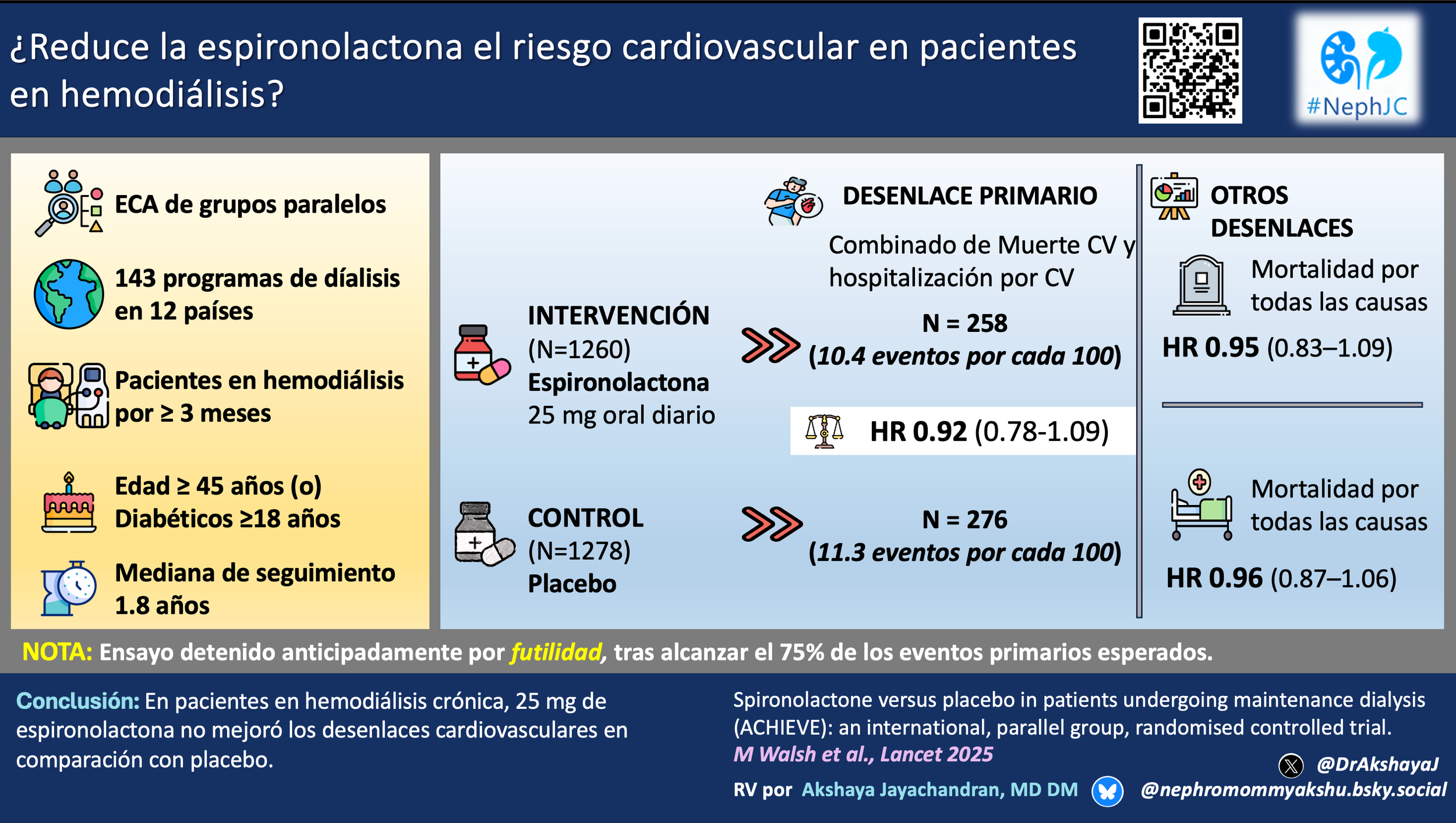Curious how n-3 PUFAs may cut serious cardiovascular events in dialysis? 🐟
A big signal, a big dose, and a big discussion ahead — don’t miss this #NephJC!
Check out the VA made by our master Brian Rifkin
This week, we will discuss the phase 3 ORIGIN3 trial of atacicept, an APRIL/BAFF inhibitor for use in IgAN.
Day 3 of Kidney Week. Sibeprenlimab and Balcinrenone on NEJM and Lancet, plus a couple of other non-kidneywk studies.
in this edition: Fish Oil, GBD, Flozination meta-analysis, CHW intervention in Hispanic/Latino patients, and much more
in this edition: Atacicept in IgAN; Albuminuria as a surrogate outcome, Renal Remission and additional CONFIDENCE analysis
Curious how n-3 PUFAs may cut serious cardiovascular events in dialysis? 🐟
A big signal, a big dose, and a big discussion ahead — don’t miss this #NephJC!
Check out the VA made by our master Brian Rifkin
KDIGO 2025 is here. IgAN management is evolving with precision risk tools, new therapies, and a stronger focus on kidney protection.
Check out the visual abstract created by Natalia Nombera
Is getting immunosuppression-free a chimera in kidney transplant?
Check out the visual abstract by Bogdan Agavriloaei

La hipertensión arterial sigue siendo uno de los principales factores de riesgo modificables para enfermedad cardiovascular y enfermedad renal crónica. Las nuevas guías AHA/ACC 2025 han actualizado aspectos fundamentales sobre la prevención, la evaluación y el tratamiento de la hipertensión, con implicaciones directas para la práctica nefrológica.
Revisa el resumen visual creado por Dr Sejal Lakhani
visual abstract, Visual Abstract, sejal lakhani, Hypertension, HTN, ACC/AHA, 2025

New updated guidance on hypertension including screening for secondary causes, use of renal denervation, hypertension and pregnancy, risk assessment, monitoring and treatment.
Check out this wonderful VA by Dr Sejal Lakhani

¿La espironolactona será la heroína que conquiste el corazón en hemodiálisis?
Descúbrelo en la travesía del ensayo ACHIEVE y únete a la discusión en #NephJC.

Does spironolactone decrease cardiovascular disease and heart failure hospitalizations in patients on dialysis?
Check out this crisp VA by Dr Akshaya Jayachandran.

Is a lower versus higher phosphate target beneficial to patients undergoing hemodialysis?
Check out this crisp VA by Dr Sejal Lakhani
Check out the beautiful visual abstract made by NephJC intern Michelle Fravel.
El ensayo CONFIDENCE evaluó la combinación de finerenona + empagliflozina en ERC + DM2: mayor reducción de CACu a 180 días. ¿Estamos listos para iniciar la terapia combinada desde el principio?
Revisa el resumen visual por Michelle Fravel
Check out the beautiful visual abstract made by Kajaree Giri
El estudio NUDGE-CKD evaluó si enviar cartas electrónicas con recomendaciones a médicos y pacientes podía aumentar el uso de tratamientos clave en enfermedad renal crónica (iSRAA o iSGLT2).
Revisa el resumen visual por Divya Bajpal
¿El resultado? Hoy en vivo por #NephJC!
Check out the beautiful visual abstract made by NephJC faculty Dr Divyia Bajpai
Stunning visual abstract summarizing NEJM study, by Priti Meena

Y no, no estás viendo doble… Doble dosis de desmopresina en #NephJC. El segundo estudio de Chakrabarti et al incluyó un escenario más complejo, aunque con resultados no concluyentes.
¿Será momento de replantear los estudios con desmopresina en la vida real?
No olvides revisar el resumen visual creado por Cristina Popa.

Does desmopressin reduce the risjk of post kidney biopsy bleeding? Checkout the beautiful VA answering this practical question by NSMC faculty Dr Divya Bajpai.
What is the effect of microvascular inflammation on kidney allografts? Checkout the crisp VA by NSMC faculty Dr Divya Bajpai.
Un estudio observacional con emulación de ensayo aleatorizado en Escocia sugiere que mantener metformina en pacientes con ERC estadio 4 se asocia con mejor supervivencia y sin aumento de eventos cardiovasculares adversos mayores 🫀.
¿Estamos listos para replantear esta práctica?
Aquí te dejamos el resumen visual por Cristina Popa #NephJC

Should we continue metformin in eGFR under 30 ml/min? The visual abstract by Cristina Popa summarizes the conclusions from the Scottish cohort using target trial methodology.